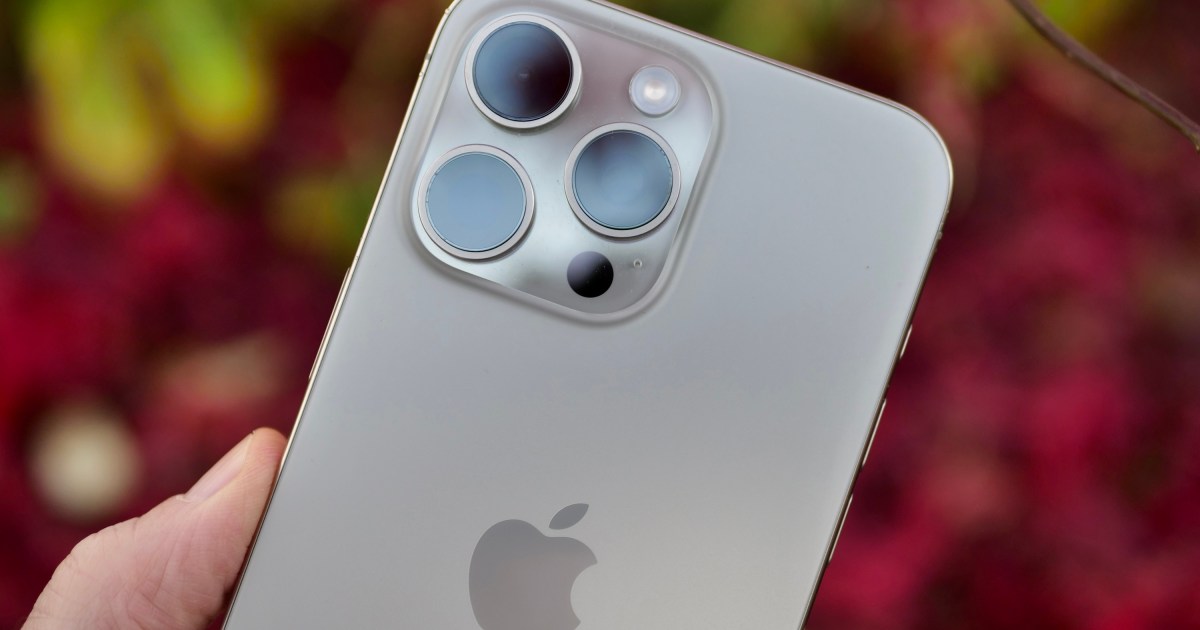Apple iPhone 15 Pro Max by Andy Boxall / Digital Trends
Not too long ago, there were rumors circulating that Apple was developing an in-house chatbot called Apple GPT. This chatbot would be based on Apple’s own AI model and aimed to replicate the functionality of OpenAI’s ChatGPT. Since then, we have seen generative AI products popping up in various devices, from Google Pixels and Samsung’s Galaxy S24 phones to newer entrants like the Nothing Phone 2a.
While other companies have been actively rolling out generative AI products, Apple has remained relatively quiet, with only vague promises being made. Apple’s CEO Tim Cook mentioned to investors that their generative AI efforts will “break new ground” upon release later this year. It seems that Apple may be partnering with Google to bring these ambitions to fruition, or potentially seeking assistance from OpenAI.
According to reports from Bloomberg, Apple is in discussions with Google to license the Gemini AI models for iPhones. This strategy mirrors what Samsung did with the Galaxy S24 series, where they implemented Google’s Gemini Nano model on-device, with more powerful versions available in the cloud.
While the terms of the potential deal are still being negotiated, Apple is also reportedly in talks with OpenAI. OpenAI’s innovative technology, including the GPT-4 model and Dall-E, is currently accessible through Microsoft’s products and standalone apps like ChatGPT Plus. This collaboration signals an exciting development in Apple’s AI aspirations – a prospect that both excites and concerns me.
Apple’s progress in AI technology has been notable. Towards the end of 2023, Apple introduced a set of model libraries and frameworks under the MLX group designed to leverage generative AI capabilities on their proprietary silicon, similar to Qualcomm’s Snapdragon X Elite platform.
Earlier this year, Apple’s research division published a paper on Keyframer, a generative AI tool that enables users to create animated content. This tool is based on OpenAI’s GPT-4 model but integrates vector graphics for processing still images.
In addition, Apple researchers introduced an AI tool that simplifies image editing through verbal commands. This feature is reminiscent of Qualcomm’s voice-assisted media editing functions with their latest Snapdragon chips.
Reports have surfaced indicating that Apple is expanding its team dedicated to exploring generative AI functionalities to make these tools accessible to developers by 2024. Rumors suggest that the first set of generative AI features will be unveiled with iOS 18, set for a June launch. These features are expected to focus on on-device systems rather than cloud-connected services like ChatGPT, Gemini, or Perplexity.
In a separate development, it was revealed in September that Apple is working on “foundation models” to enhance Siri, similar to Google’s advancements with Google Assistant.
Google’s Gemini AI model offers a plethora of capabilities to phones when running locally or connected to the internet. Key features include summarizing conversations in offline scenarios, smart reply suggestions in chat apps, offline translations, natural language conversations, image generation, and more.
The potential collaboration between Apple and Google for AI integration raises questions about how this partnership could impact user interactions and the evolution of Siri. While Gemini has its strengths, it also has its shortcomings, as evidenced by recent controversies surrounding the accuracy and cultural sensitivity of generated content.
Overall, the future of AI integration in Apple devices looks promising, but also comes with its share of challenges and risks that need to be carefully navigated to ensure a seamless user experience.


